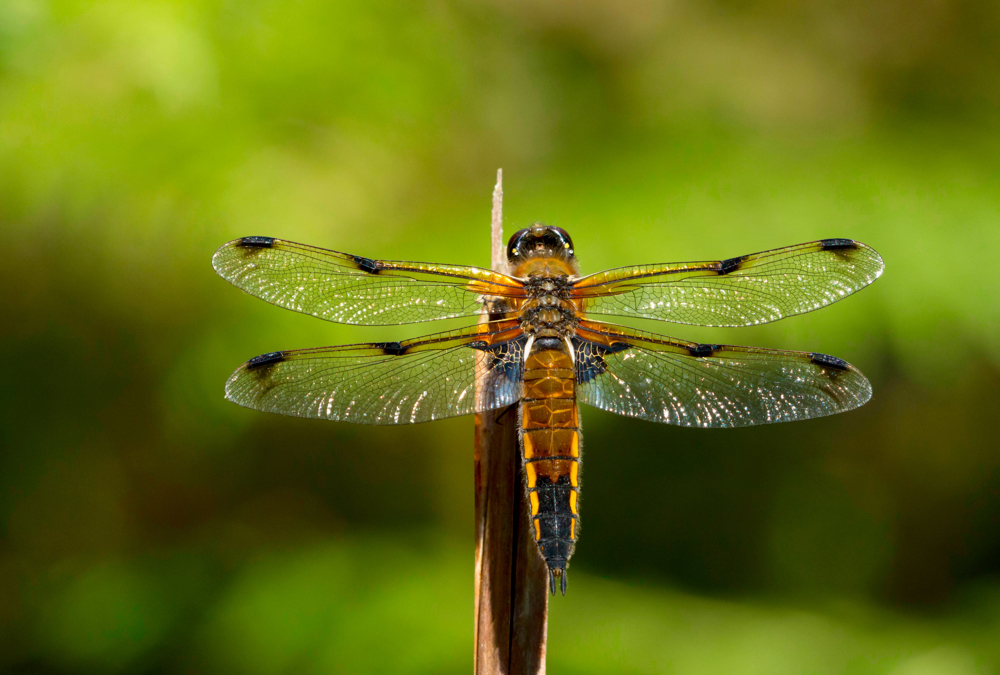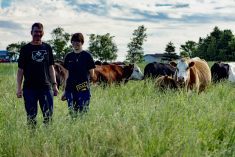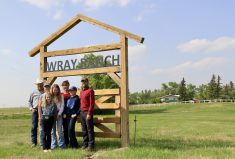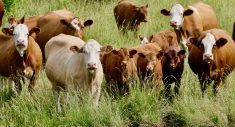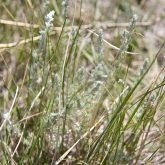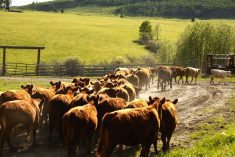Nature works in whole systems. There are millions of symbiotic relationships that coexist in a single ecosystem. Yet every ecosystem also interacts and relies on the other ecosystems around it. The aquatic ecosystem has a dynamic interaction with the riparian area ecosystem which interacts with the uplands ecosystem which relates to the woodland ecosystem.
We are part of a very complex system, yet it is very simple. If we walked away, nature would heal itself. The water cycle would repair itself, carbon would balance out again and ecosystems would heal. I have found that the less I do in agriculture, the more our ecosystems respond in a positive manner. If we continually try to manipulate the land to do what we want, we cause more damage. My plan is to just back off. My plan is to let nature rebuild the biodiversity.
Read Also

Body condition, nutrition and vaccination for brood cows
One of the remarkable events of the past century related to ranching has been the genetic evolution of brood cows….
A few years ago, I was approached by a local grain farmer. He had a piece of marginal land in his operation that was in a low area. Quite often it was too wet to seed or maybe too wet to harvest and he wanted me to graze it instead. It was a small piece in a highly grain-dominant area. Normally, a small piece like this by itself (100 acres) would not interest me, as the labour and equipment costs would be too high. But it looked like a learning opportunity for me. The land had two water bodies on the edge between the new pasture and the grain land. Water would not be an issue, we thought. We perimeter-fenced it and cross-fenced it and started to regeneratively graze the land. We found out right away that, yes, it was definitely wet land.
When the rain came, the water had nowhere to go. We were suddenly grazing forage through 11 inches of water. I tried to stay on high ground but there was just not enough of it. I ended up digging a third water source because the alleyway was far too muddy to have the animals walk back to water. The ground was very hard. My backhoe could barely dig past two feet into the ground. The clay was so hard and compacted that the water had nowhere to go. There was zero infiltration. With years of tillage and crop farming, the root zone had been very shallow. When roots never get a chance to penetrate down into that clay, it becomes rock solid.
Another symptom that arose from this was the mosquito population explosion. Fencing during the first summer was absolutely unbearable. I have never seen that many mosquitos. Normally, I do not use bug spray but in this case, I had to. My wife refused to even get out of the vehicle when I would stop to check the herd. My hired hand refused to go down there to check fence. With all the standing puddles, the conditions were ideal for mosquito reproduction. The symptom was the mosquitos. The problem was, without proper riparian area management, the predators were not present.
Flooding and mosquitos, how do we manage this? We need to improve water infiltration and I know that equipment can’t fix what equipment caused. We need roots. Deep penetrating roots and not necessarily tap roots like everyone thinks. We also need large fibrous root systems that can dig deep into that clay. I had already seeded a polyculture cover crop out there with a mixture of annuals and perennials, C4 plants and C3 plants, grasses and legumes, creeping roots and tap roots.
However, with the flooding, many of those species never survived. I wasted some money. It needed more riparian-area species. My goal was to back off and let the species that did take a foothold penetrate that clay zone and open pathways. We need those root systems to dig deep and improve the water infiltration. It only took two years and I already see a huge difference in infiltration. Last summer we had another very wet year and there was only water on the surface in a few spots. This was a huge improvement from the year before.
What about the mosquitos? They were still unbearable in the second year. I had a discussion with the grain farmer the first year and I explained to him that we need to protect those riparian areas to improve the predator breeding grounds. He allowed me to fence off the water sources on both sides. I moved the fence out into the grain side as well about 30 more feet. He was, of course, grain farming right up as close to the water as he could. I convinced him to back off on both water sources.
There are many important predators that I manage on my ranch but for today we will only look at the dragonfly. They are an apex predator in the insect world. They are fast, agile and eat anything smaller than themselves. Their adult life span is only about two weeks long so I need quite a few hatchings of this very beneficial predator throughout the summer.
The problem is that their teenage aquatic nymph stage can be up to four years long. This stage needs a healthy water system to survive. Excess chemical or fertilizer run-off can be detrimental to the nymphs. Allowing livestock access into the water can also be detrimental. It can take between two to four years (depending on the species) to get a healthy population of adults that prey on mosquitos. Actually, both the nymph and the adult stages eat a lot of pests for us. The adults also need the long, tall grasses around the edge for reproduction. You have all seen dragon flies playing piggy-back right? Just so you know, they are not playing piggy-back. The long tall grasses give them a place to land to get the job done while they are playing.
Partway through the second season, a hatching of dragonflies emerged. You could see hundreds and hundreds of dragonflies at any given time. All I have to say is that we no longer needed bug spray.
When you address a symptom, it reappears. When you deal with the problem, the symptom goes away. I am excited to see how this ecosystem continues to heal this summer. My plan is to continue to back off and let nature build biology for me. It is a simple plan that involves a very complex ecosystem.


